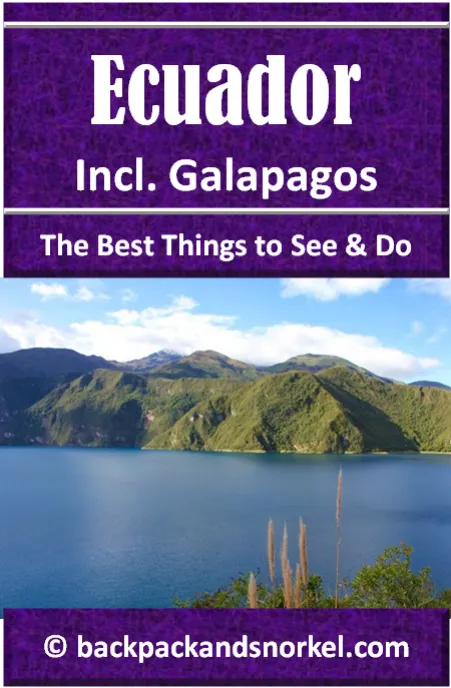Backpack and Snorkel Travel Guide for Ecuador and the Galapagos Islands - Ecuador and Galapagos Islands Purple Travel Guide
This Backpack and Snorkel Travel Guide for Ecuador and the Galapagos Islands (Ecuador and Galapagos Islands Purple Travel Guide) provides information about the best things to do in Ecuador and the Galapagos Islands and ensures that you will be Making Memorable Moments on a relaxing vacation in Ecuador and the Galapagos Islands.
Ecuador has long been a favorite for expats especially from the USA, as the country uses the US dollar as currency, has excellent health care, natural beauty and a comparably low cost of living.
Some tourists explore the rich history and natural beauty of the mainland, many come, however, only to visit the Galapagos Islands.
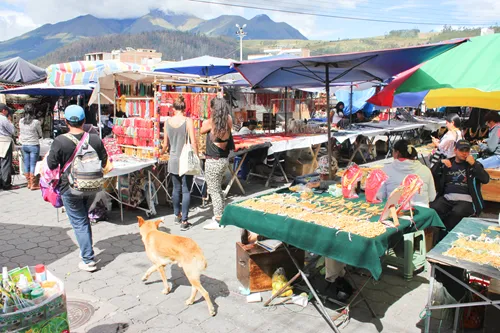
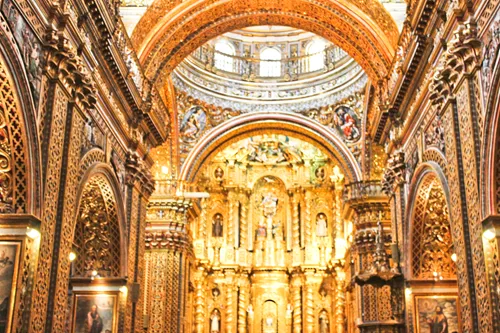
The Galapagos Islands are an archipelago of volcanic islands about 600 miles (1000 km) west of Ecuador in the Pacific Ocean.
Renowned for Charles Darwin discovering the concept of Evolution after his 1835 visit, the islands have a sprawling ecosystem of plant and animal species. Many of them are endemic, meaning that they are not found anywhere else on the planet. Among those species are the giant Galápagos tortoise, the marine iguana, the flightless cormorant, and the Galápagos penguin, which is the only penguin species that lives in the Northern Hemisphere.
The Galapagos Islands belong to Ecuador and many people flock to the islands without spending any significant time in Ecuador.
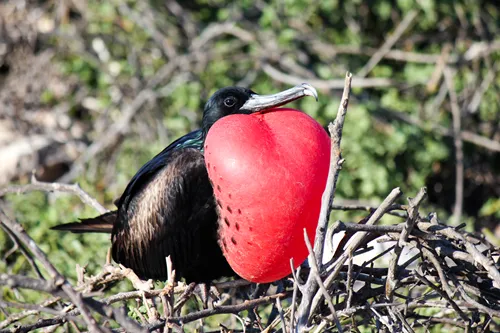

In this Ecuador & Galapagos Purple Travel Guide, we provide a detailed 12-day itinerary that will allow you to experience the Galapagos Islands on a cruise and some of the major highlights of Ecuador.
We tell you why we chose these spots and will help you plan for the best things to see and do in Ecuador and Galapagos. To help you find out what best fits you, we have added lots of photos and links to additional reviews.
Due to its compactness, it can be combined with other South American countries or act as a starting point to a more in-depth 3 or 4 week Ecuador experience.
General Information about Ecuador
Ecuador is one of 17 megadiverse countries in the world and it harbors almost 1,700 bird species (17% of the world’s total bird species) and 16,000 species of plants (25% are endemic).
The Galapagos Islands are home to:
22 reptile species (20 are endemic)
6 land mammal species (83% are endemic)
48 bird species (58% are endemic)
estimated 2300 terrestrial invertebrate species (52% are endemic)
600 species of vascular plants (42% are endemic)
estimated 2,900 marine life species (~20% are endemic) of which approx. 500 are fish species
The first Paleo-Indians settled in what is now Ecuador 16,500–13,000 years ago. In the late 1400s, the Incas started conquering the area and it took them until the early 1500s to complete the conquest. Less than 30 years later, the Inca Empire experienced a civil war which helped the Spaniards conquer the area.
Quito, which is the oldest capital in South America, was founded in 1534.
In 1820, the Department of Guayaquil became the first territory in Ecuador to gain its independence from Spain. Most Ecuadorian coastal provinces declared independence on 24 May 1822, which is now Ecuador's official Independence Day. The rest of the country gained its independence after Spanish Royalist forces were defeated at the Battle of Pichincha, near Quito.
Ecuador then joined Simón Bolívar's Republic of Gran Colombia and separated from it in 1830 to become an independent republic.
In 1832, Ecuador annexed the Galapagos Islands.
In 1978, the city of Quito and the Galápagos Islands became UNESCO World Heritage Sites.
Ecuador has the first constitution that recognizes the rights of nature and that makes the protection of the nation's biodiversity an explicit national priority.
Specific information about Ecuador:
Language: Spanish
Currency: US dollar
Time: the local time in Ecuador do not use daylight savings time; the local time can be found here
Time: the local time in the Galapagos Islands is 1 hour earlier than on the mainland; it can be found here
Driving side: right
Speed limit: Generally 50 km/h (31 mph) in the cities and 90 km/h (56 mph) or 100 km/h (62 mph) outside the cities
Electricity: 110V, 60Hz
Power outlets: the same “Type B” three-pronged outlets as in the US
Internet code: .ec
Calling code: +1-593
Population: 17.7 million people
Ecuador offers 90 day tourist Visas at arrival to citizens of many countries, e.g. the USA and Canada. Check your entry requirements here
When to visit Ecuador & Galapagos
The best time to visit Quito, Ecuador
Due to its location on the equator and its elevation of 9,350 ft (2850m), Quito has a cool climate with basically the same daily high and low temperatures throughout the year.
During its dry season June-August, there are only 5-7 days per month with measurable precipitation while during the rest of the year, there are on average 10-15 per month.
The UV index is almost always 11 and higher and that means 'extreme risk of harm from unprotected sun exposure'.
There are 12 daily daylight hours throughout the year in Quito.
July and August have the most sunshine hours (approx. 250h), while February through April have the lowest (approx. 120-140).
Average Weather by Month in Quito, Ecuador


The best time to visit the Galapagos Islands
In our opinion, April and May are the best months to visit the Galapagos Islands.
Swimming and snorkeling are good, no wetsuits are needed and animal life is abundant. Blue-footed boobies show their famous courtship dances and frigate birds display their bright red gular pouches.
But, to be honest, the whole year is a good time to visit the Galapagos Islands. It purely depends on your preference of what you want to see and do.
Please be advised that the naturally occurring climatic phenomenon El Niño has an impact on the climate and animal life of the Galapagos Islands. El Niño occurs on average every 5 years, but happens irregularly and can occur anywhere between every 2 to 7 years.
During an El Niño event, the nutrient-rich Humboldt Current does not reach the Galapagos waters, strong winds, heavy rains, and warmer ocean currents damage the fragile ecosystem of the Galapagos Islands.
Due to the lack of food, sea lions, sharks, fish, and birds search for food in places they typically avoid. Animals depending on fish and algae (Galapagos marine iguanas, blue-footed boobies, red-footed boobies, Galapagos penguins, flightless cormorants, etc.) tend to starve during that time.<
Due to the increased rainfall, plants on the islands thrive, and thus land iguanas, giant Galapagos tortoises and many land birds thrive.
If you are worried about visiting the Galapagos Islands during the rainy season, don’t worry. It typically rains at night and the sun burns off the clouds by 10am or 11am.
Here is an overview of the highlights of the Galapagos Islands by month:
January Galapagos Highlights |
|
February Galapagos Highlights |
|
March Galapagos Highlights |
|
April Galapagos Highlights |
|
May Galapagos Highlights |
|
June Galapagos Highlights |
|
July Galapagos Highlights |
|
August Galapagos Highlights |
|
September Galapagos Highlights |
|
October Galapagos Highlights |
|
November Galapagos Highlights |
|
December Galapagos Highlights |
|
Average Weather by Month in the Galapagos Islands, Ecuador
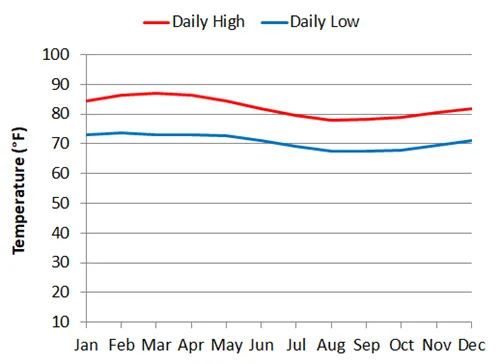
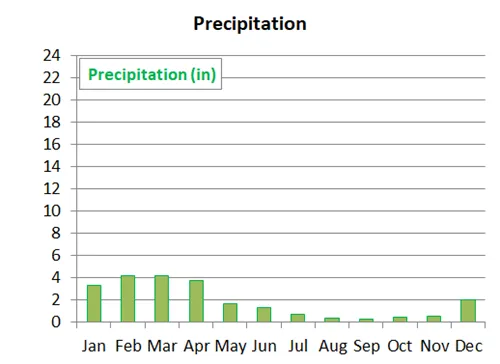
Wonderful 12-Day Itinerary of Ecuador and the Galapagos Islands
This 12 day itinerary allows enough time to explore the absolute highlights of Ecuador. Due to its compactness, it can be combined with other South American countries or act as a starting point to a more in-depth 3 or 4 week Ecuador experience.
Day |
Night |
|
Day 1 |
Arrive in Quito |
|
Day 2 |
Quitsato Mitad del Mundo; Otavalo Market; Cascadas de Peguche; Laguna de Cuicocha |
|
Day 3 |
Flight to Baltra (Galapagos); Galapagos Cruise: North Seymour |
Cruise Ship |
Day 4 |
Cruise Ship |
|
Day 5 |
Cruise Ship |
|
Day 6 |
Cruise Ship |
|
Day 7 |
Galapagos Cruise: Santa Cruz; transfer to Isabela; Puerto Villamil |
|
Day 8 |
||
Day 9 |
Flight to Quito; Quito (New Town) |
|
Day 10 |
||
Day 11 |
||
Day 12 |
TelefériQo; Depart Quito |

Author: Rudy at Backpack and Snorkel
Bio: Owner of Backpack and Snorkel Travel Guides. We create in-depth guides to help you plan unforgettable vacations around the world.
Other popular Purple Travel Guides you may be interested in:
Like this Backpack and Snorkel Purple Travel Guide? Pin these for later:


